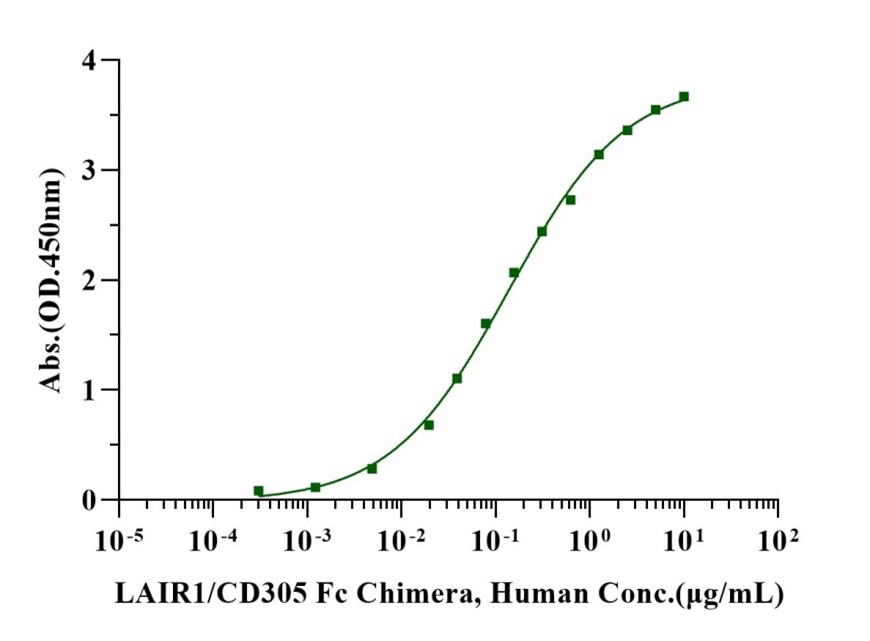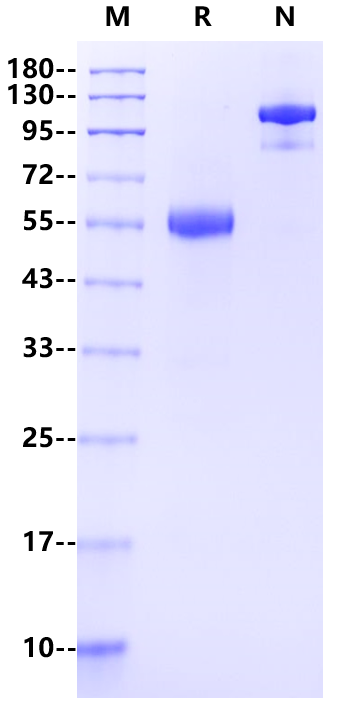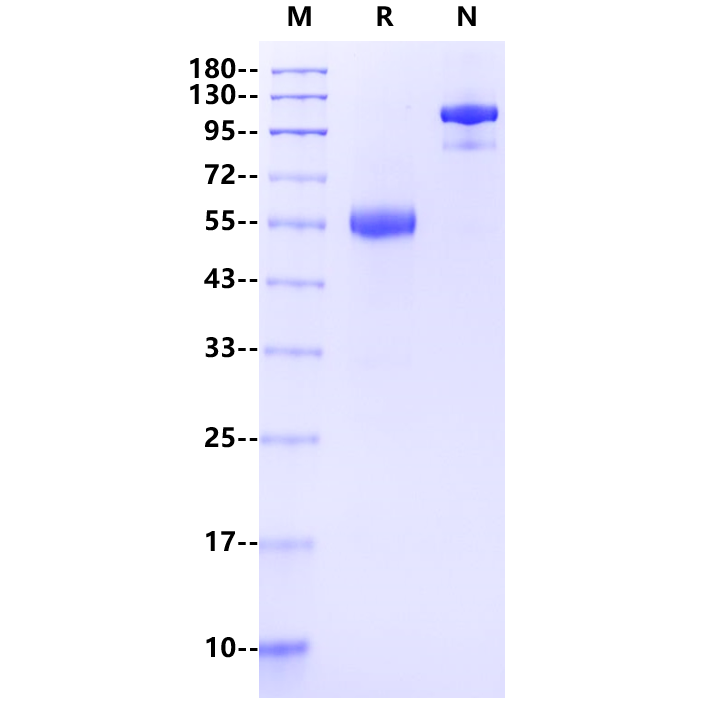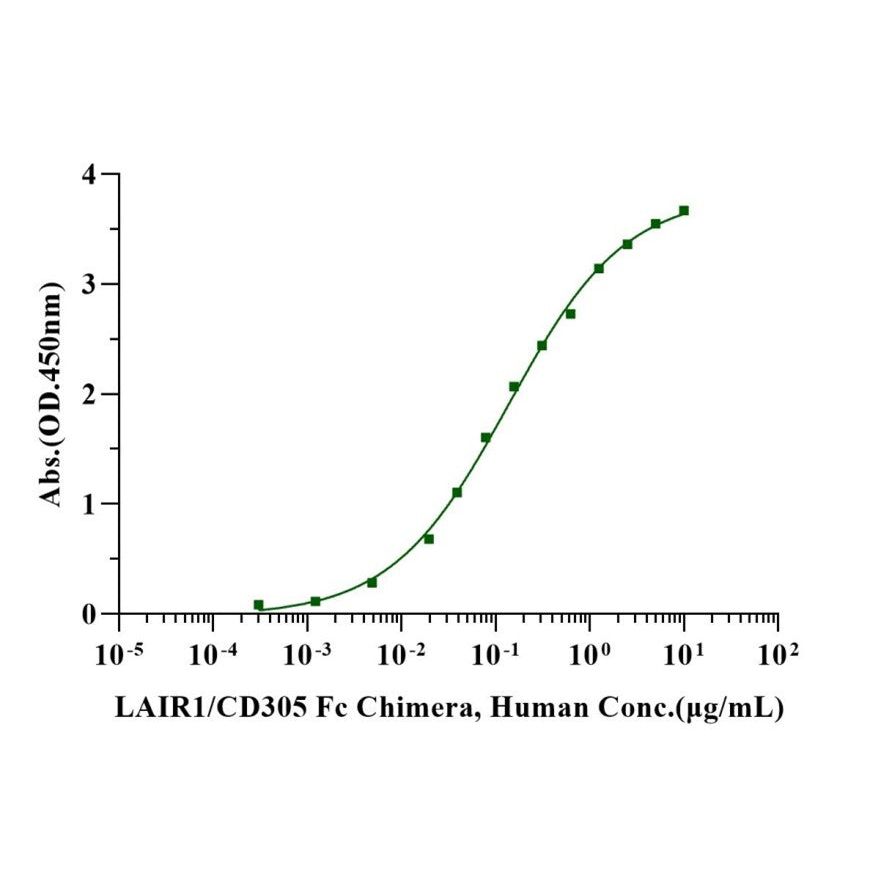Immobilized Cell AdhereTM Type I collagen, Human, Lyophilzed at 0.5μg/mL (100μL/well) can bind LAIR1/CD305 Fc Chimera, Human (Cat. No. UA010033) with EC50 of 0.11-0.17μg/ml.
Product Details
Product Details
Product Specification
| Species | Human |
| Accession | Q6GTX8-1 |
| Amino Acid Sequence | Gln22-His163, with C-terminal Human IgG1 Fc |
| Expression System | HEK293 |
| Molecular Weight | 50-60 kDa(Reducing) |
| Purity | >95% by SDS-PAGE under reducing conditions |
| Endotoxin | <0.1EU/μg |
| Conjugation | Unconjugated |
| Tag | Human Fc Tag |
| Physical Appearance | Lyophilized Powder |
| Storage Buffer | PBS, pH7.4 |
| Reconstitution | Reconstitute at less than 1 mg/mL according to the size in ultrapure water after rapid centrifugation. |
| Stability & Storage | · 12 months from date of receipt, lyophilized powder stored at -20 to -80℃. · 3 months, -20 to -80℃ under sterile conditions after reconstitution. · 1 week, 2 to 8℃ under sterile conditions after reconstitution. · Please avoid repeated freeze-thaw cycles. |
Background
Leukocyte-associated immunoglobulin-like receptor-1 (LAIR-1) is a type I glycoprotein of 287 amino acids containing a single extracellular Ig-like domain followed by a stalk region connected to the single transmembrane domain and 2 cytoplasmic immunoreceptor tyrosine-based inhibitory motifs that relay the inhibitory signal. LAIR-1 is expressed on almost all immune cells, including NK cells, T cells, B cells and mono-cytes, monocyte-derived dendritic cells, eosinophils, and basophils and mast cells. LAIR-1 binds both transmembrane and extracellular matrix collagens. The mLAIR-1 gene maps to the proximal end of mouse chromosome 7 in a region syntenic with human chromosome 19q13.4 where the LRC is located. LAIR-1 are involved in controlling the balance of the immune system to prevent improper activation or overactivation, which may result in tissue damage or autoimmune diseases. LAIR1 has been shown to inhibit T and NK cell activation mediated by several activating receptors. Furthermore, it has been shown that LAIR1 can deliver an inhibiting signal on intracellular free calcium concentration and immunoglobulin (Ig) production induced by the engagement of B cell antigen receptors (BCR).
Picture
Picture
Bioactivity

SDS-PAGE





